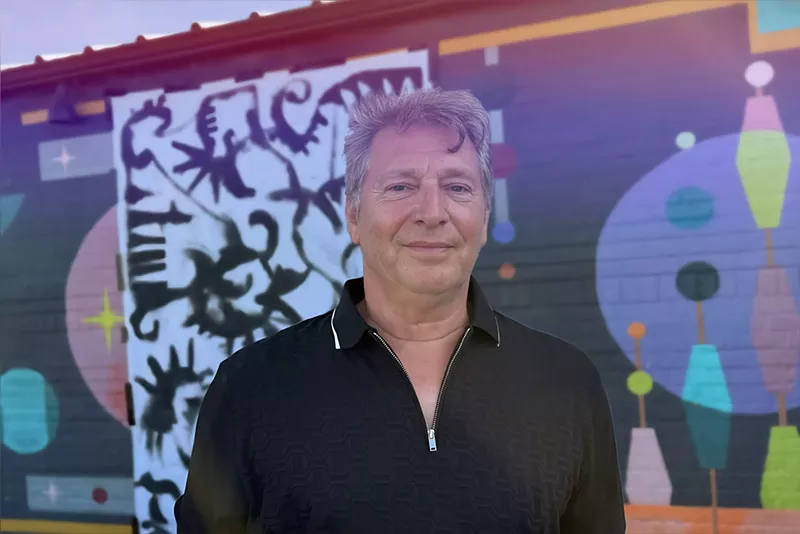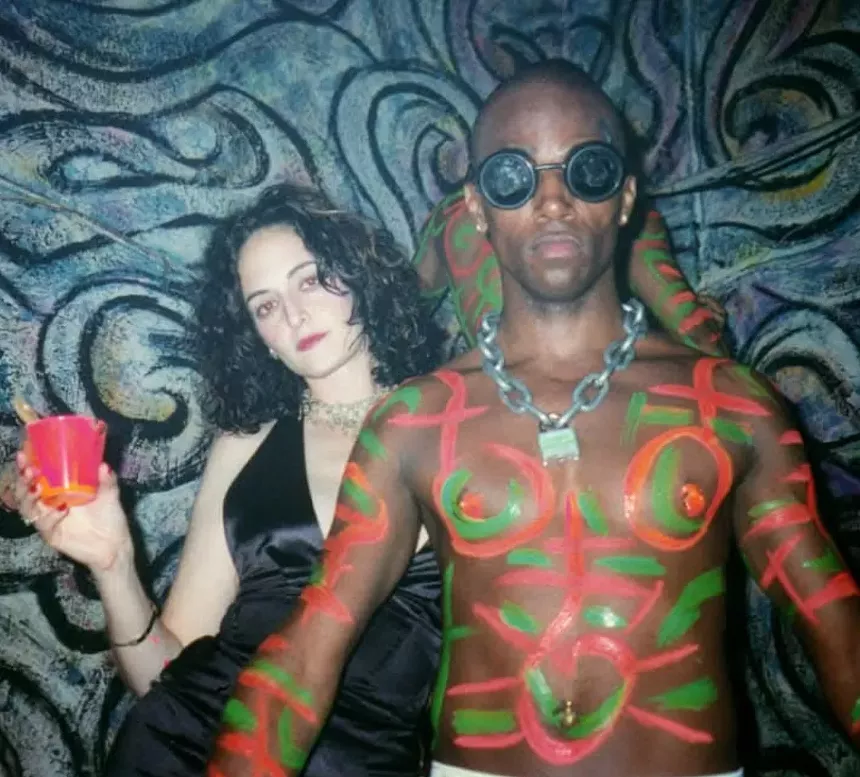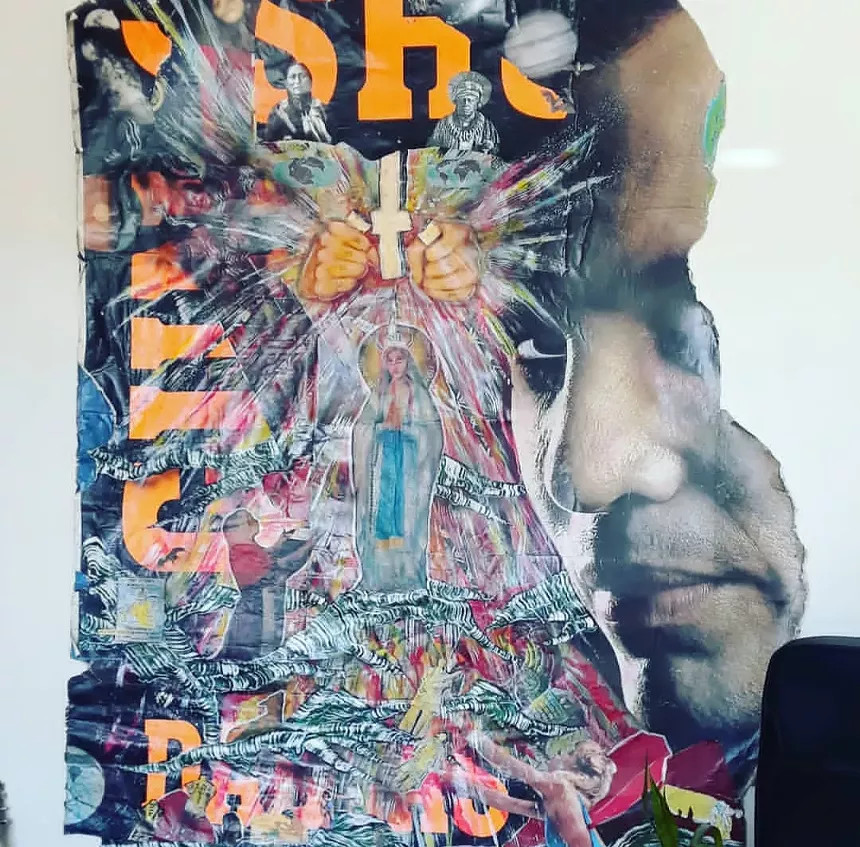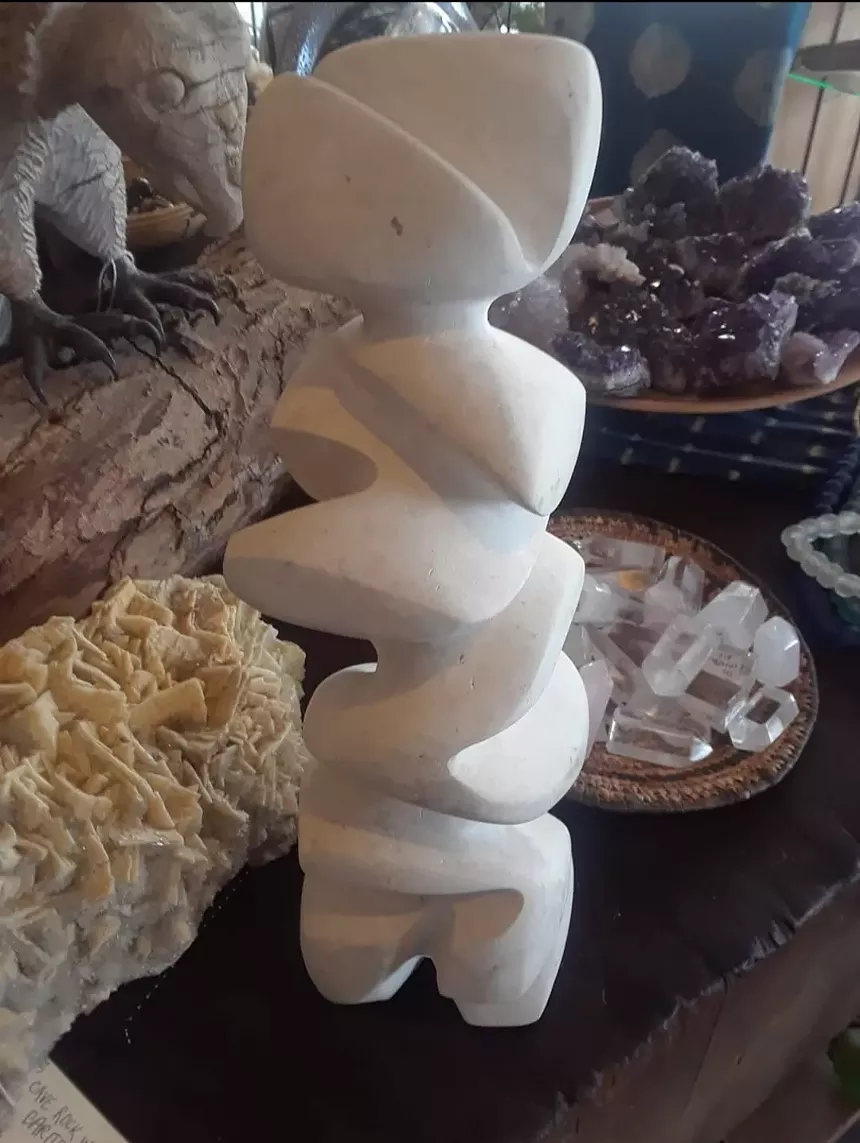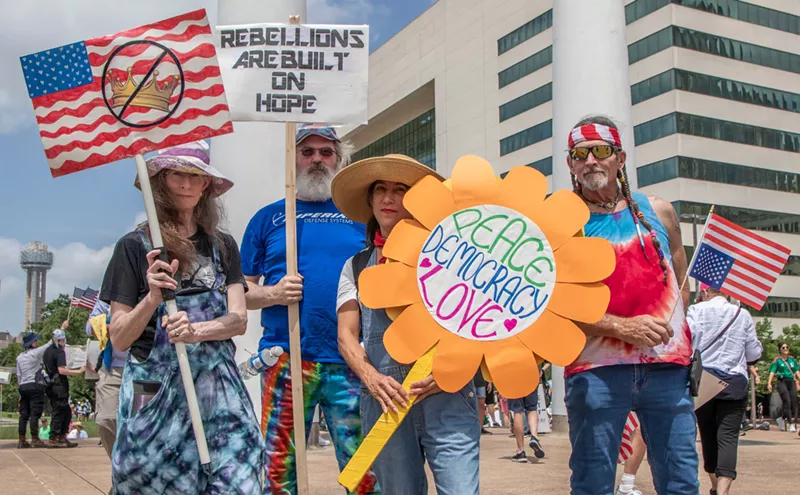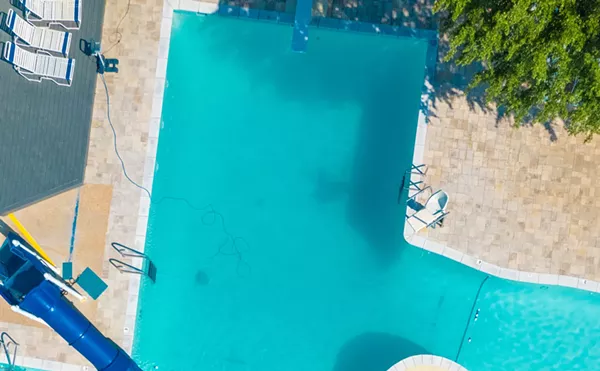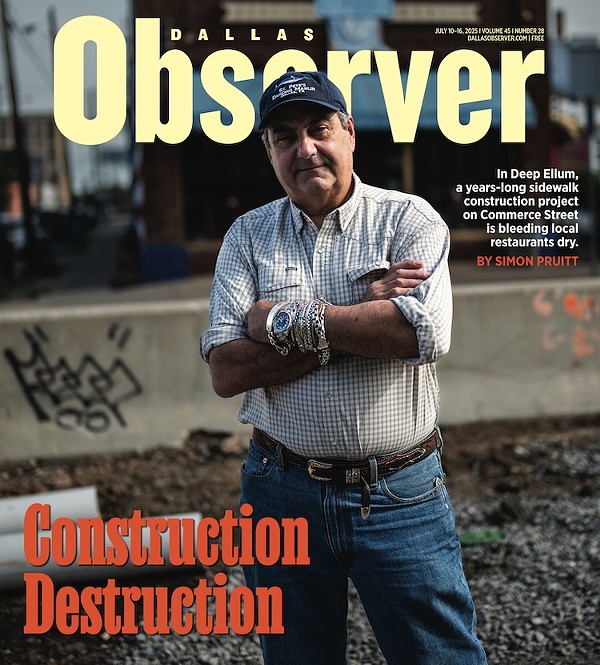For decades, Austin made the city itself his muse and canvas, crafting pieces that pulse with the energy of reinvention, defiance and boundless creative spirit. His story is one of transformation, not only with materials, but also spaces, communities and lives.
From spray cans to limestone chisels, Austin's work flourishes with a tactile intimacy and a deep-seated love for engaging others in creation. Across his timeline, there’s a common thread: no matter the medium, he finds beauty in the discarded, reshaping remnants of Dallas into reflections of the city’s better self.
From Mud to Masterpieces
Growing up in the Dallas-Fort Worth area, Austin remembers an early connection to the act of making art.“Even as a young boy, my mother would get on to me because I would get a Marks-A-Lot or crayons and just start drawing on the walls or furniture,” he recalls.
His childhood was woven by afternoons spent digging through the mud near the woods, sculpting odd little treasures or concocting floral perfumes in kitchen sinks. Creativity, for the young Austin, was instinctive.
“I just thought it was natural, [I] thought everybody was that way,” he says.
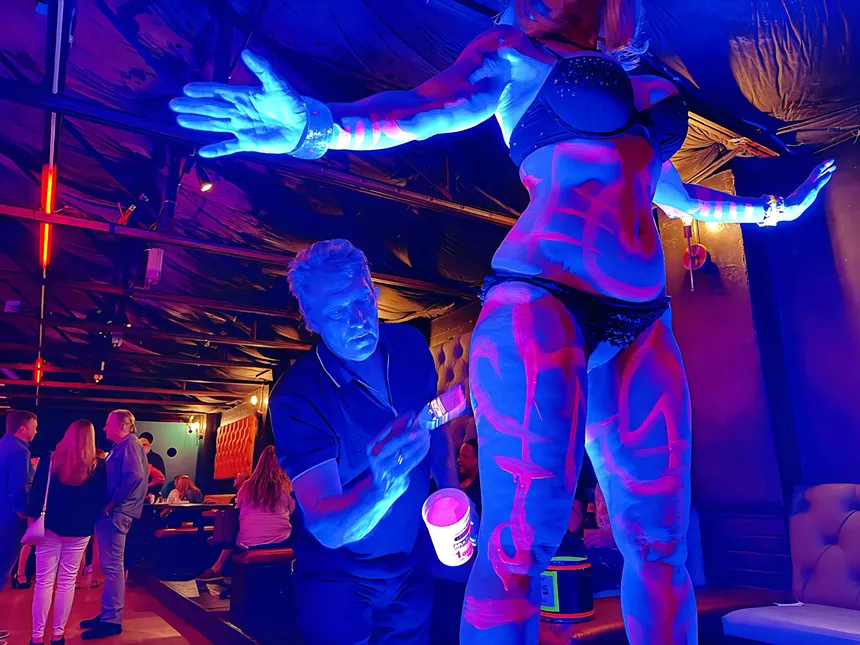
Clay Austin brings his signature artistry to life, painting a dancer with glowing neon designs under blacklight at the Club Clearview Reunion at It'll Do Club on May 30, 2025.
Preston Barta
But Austin’s artistry found its first true home in his teens when he discovered the potential of spray paint. Whether under secluded trestle bridges or along the city's highways, the smooth hiss of paint clung to the air as his creations began to emerge. Austin’s pieces often featured women’s faces rendered on concrete canvases, meant to break the monotony of a commuter’s daily grind.
“I wasn’t writing my name or tagging,” he explains. “I was just trying to beautify the mundane drive for people — give them something to look at.”
This pursuit of transforming unremarkable spaces into unexpected moments of beauty became Austin’s hallmark. It didn’t take long, though, for authorities to notice. His work caught up with him one day on Central Expressway, where a newly completed piece led to an arrest. The Texas Highway Department decreed Austin’s restitution owed to be in the form of a mural for Parkland Hospital, re-directing him from covert graffiti artist to community-sanctioned muralist.
Deep Ellum’s Residency of Rawness
It was the mid-1980s when Clay Austin stumbled into Deep Ellum, a place that seemed to breathe the raw, rebellious energy that coursed through him.“That neighborhood was brand new and inspiring,” he says.
At its heart sat Club Clearview, a haven for music, art and chaotic creativity. It wasn’t long before Austin became a fixture in the venue’s ecosystem, trading his clandestine street art for a role as the official artist-in-residence.
“I began sneaking in spray paint and cautiously painting in back areas that I could get away with,” Austin recalls with a laugh.
Instead of reporting him, though, the club’s owner, Jeff Swaney, recognized Austin’s talent. When Swaney offered Austin the opportunity to become Clearview’s artist in residence, he seized the chance, leading to some of the most prolific years of his career.
The walls of the nightclub became Austin’s domain. There, he painted sprawling murals, reconfigured spaces with found objects and even transformed an entire room into a glowing black-light world with surreal textures and energy. Each Friday, he painted intricate, ephemeral flourishes on the floor, only to see them danced upon and replaced the next weekend. His mission was clear: create immersive environments that elevated the club from a space for music to an all-encompassing experience.
“I didn’t just want decoration,” he explains. “I wanted them to feel something inside those rooms. That environment needed to tell its own story.”
Deep Ellum’s gravitational pull wasn’t limited to art. For Austin, the neighborhood pulled in people, too. He cemented friendships that remain to this day and recruited collaborators from every walk of life, including the unhoused individuals drawn to the neighborhood’s unique magnetism.
Clearview also brought Austin face-to-face with musical legends. Between painting dancers in vibrant UV-reactive hues and feeding bands like the Neville Brothers on shoestring budgets, Austin bore witness to a cultural movement. He smiles at the memory of bringing Skinny Puppy to a house party where they were kicked out for walking on furniture. Yet perhaps his favorite night was meeting Pink Floyd, who rented the club for an after-tour celebration.
“I mean, that still amazes me,” he says.
When Club Clearview shut its doors in 2007, a chapter closed for Austin, too. But Deep Ellum’s creative spirit, its beating heart of reinvention, had thoroughly imprinted itself on his work.
Reflecting Dallas, One Billboard at a Time
True to his ethos of reimagining the overlooked, Austin’s years in Clearview included an ingenious series of billboard collages.“Back in those days, billboards were paper, not vinyl,” he says. “When storms would tear off chunks, I’d climb up and grab pieces about to fall and make these huge collages.”
By layering the remnants of Dallas’ adscape, Austin reconstructed the voices of consumption into sprawling works of abstraction.
“It was so exciting for me to lay those pieces out on the floor, see the colors side by side, and find a new rhythm in them,” he says.
These collages became mirrors of the city itself, reassembling its neglected surfaces into something enriched, purposeful and alive. This motif of "using Dallas to reflect Dallas" has carried through many of Austin’s eras of creation. Whether crafting murals on highway walls or sculptures from limestone, his work insists on the possibility of beauty in the ignored. It’s a form of civic therapy, gently persuading the city and its inhabitants to look a little closer at the potential of what surrounds them.
Carving New Pathways to Build Community
Today, Austin’s creative compass points in unexpected directions. He has traded spray cans for chisels, turning his focus to carving limestone sculptures and continuing his hallmark participatory live painting events. These two outlets meet at the intersection of solitary labor and communal engagement.“People are lucky if they can discover their purpose in life,” Austin reflects. “I think mine is encouraging creativity in others.”
His live group painting sessions invite strangers to pick up brushes and make their own marks, often under the glow of black lights reminiscent of his Deep Ellum installations.
“Some people are hesitant," he says. "But those are the ones who don’t want to leave when they find how much fun it is.”
While the sculptures satisfy his need for individual expression, Austin says the painting sessions are his favorite.
“I have to be creating constantly,” he says.
Now firmly rooted in the present while carrying the vibrant ghost of Deep Ellum’s heyday, Austin remains an emblem of Dallas’ artistic identity. His work reminds us that art doesn’t always hang on spotless gallery walls. Sometimes, it’s painted over old billboards or etched into limestone. Sometimes, it’s scrawled alongside names in a club restroom or spat out in bursts of color on an overpass.
"It’s something magical to see people who were told they weren’t artists realize that they are," he says. "We were all born with creativity.”
Whether it’s painting a step-and-repeat or collecting sticks and rocks for a new project, Austin continues to look at the world and see opportunities for connection and reinvention. Dallas’ streets may have changed since the ’80s, but its spirit still pulses in Austin’s work, quietly insisting that art belongs everywhere and to everyone.

